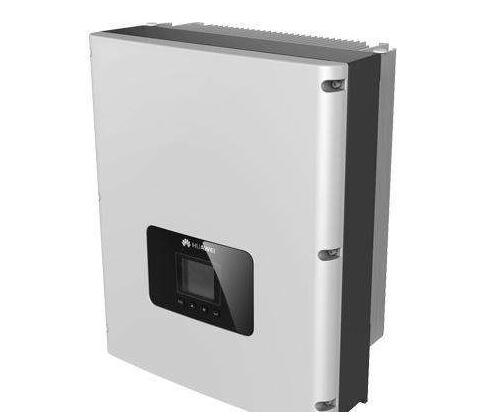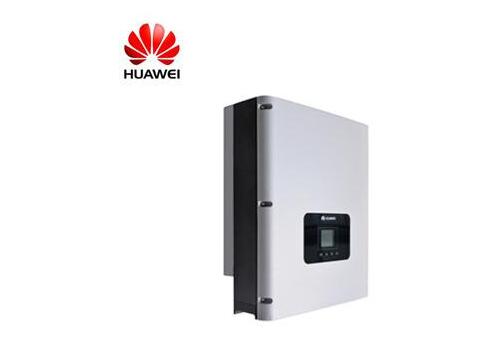Solar power systems are usually exposed directly to the outdoor environment and often encounter severe weather conditions such as high temperatures, high temperatures, high humidity, heavy sand, rain, salt fog, and so on. Huawei Reliability Lab has developed the first three comprehensive stress testing equipment for temperature, humidity, and corrosive dust, which makes the inverter products have excellent adaptability in harsh environments. For outdoor applications, high-speed, rain-flooding, energized thermal cycling, and outfield exposure methods are used to verify the long-term reliability of the inverter and ensure long-term stable operation of the equipment.
First, the mechanism of temperature changeDifferent temperatures, the molecular structure of the molecular movement speed is different, there will be differences in expansion coefficient between the different materials, heat transfer performance of the matching differences, easily lead to the parts of the clamping member relaxation. The thermal mismatch between the IGBT module and the heat sink, and the shrinkage or expansion rate of different materials are different, which may induce deformation or cracking of components, cracking of the surface coating, deterioration of airtightness or leakage, and failure of insulation protection. Usually the temperature changes slowly and the effect is not obvious. Rapid temperature changes may temporarily or permanently affect the normal operation of the equipment.
At the same time, rapid changes in temperature can easily cause condensation, water condensation or ice formation on the veneer, casing, etc. This poses a great risk to the operation of the inverter.
Second, the impact of temperature changesThe temperature that affects the inverter is mainly the temperature difference formed by regional temperature difference, day-night temperature difference, seasonal temperature difference and weather change such as sun, wind and rain. At the same time, natural heat dissipation also creates a temperature difference between the heat source, the device, and the housing, resulting in a temperature difference between the components of the inverter. In northern regions, winter temperatures are low, many places are below -20°C, summer temperatures exceed 40°C, temperature difference between day and night is 20°C, seasonal temperature difference is 60°C, and temperature rise of the inverter enclosure is between 20~30°C, internal IGBT temperature Rise at 40~50°C. This makes it easy to create temperature differences and temperature differences in various parts of the internal cavity, and the temperature changes frequently, which poses a severe challenge to the selection of product materials.
In addition, when the power output is turned on sooner or later, abrupt showers and bad weather change, the rate of temperature change is large, and condensation may form on some components, which will also affect the safe operation of the inverter.
Third, coping solutionsProduct design should consider the influence of temperature difference, and consider the risk of condensation, such as board concentration, coating protection, internal fan cooling and many other measures. In the verification aspect, high-temperature rain test and PTC charged temperature test are generally used to verify the performance of the whole machine as the main method to find weak points. At the same time, it complements the long-term adaptability of harsh environments through field exposure.
In the design, temperature equalization and temperature difference distribution are continuously considered to prevent the formation of a distinct temperature difference, thereby balancing the internal board temperature. Improve the product's adaptability to temperature changes. The thermal data is used to analyze the thermal data of heat sinks, internal power transistors, and PCB single-board devices. The heat balance is evenly distributed in the design.

1, high temperature rain test
1) Analysis of scenes of high temperature rain test
In the rain-testing room under high-temperature and high-humidity conditions, the test sample is directly showered by cold water to rapidly cool the sample outside. This is not only to verify the IP protection rating of the test sample, but also to verify the risk of internal condensation. The internal condensation test is usually used to check if condensation has occurred inside. An electrification test can also be carried out to check if the inverter is protected or fails at high temperature.
In the summer, when high humidity is used especially in tropical rain forest areas, dew condensation is likely to occur inside the module. IP65-level anti-condensation ability can be checked through a rain test to optimize internal board design. In normal use, the absolute humidity in the module changes very little, and the average temperature change rate in the module on rainy days is greater than 4 degrees/minute. With the influence of wind speed, the temperature change rate will further increase.
2) High temperature rain test method
In a dedicated shower box, maintain 10H, automatically turn on the water, at the same time the temperature box starts to decrease, the power starts to turn off, the water is turned on after 0.5H, the power is turned on, and after 10 minutes, the water spray is turned off. During the rapid cooling of the water spray, Turning off the power of the inverter can increase the temperature change rate and be compatible with the internal loss of the inverter. This cycle 10 times, time 168H. Detect power running machine conditions during the test. After the test is completed, check the conditions of the test strips.
2, PTC live temperature test
1) Scene analysis of rapid temperature cycling
PowerandTemperatureCyclingTest: Live temperature test
The purpose of the live temperature test is to expose the product to potential defects during long-term operation under different temperature conditions. The rapid temperature change of the cycle accelerates the product's high and low temperature changes in the actual scene, verifying the main method of product's adaptability to the environment and long-term reliability, especially the thermal matching characteristics of the material. Through live operation, the state of the inverter can be detected in real time.
2) PTC temperature test method
Most tests in the industry use up to 300CYCLE. Due to the special nature of the inverter, the temperature changes every day. The number of temperature changes during the lifetime is 365*25=9125 times. It is necessary to use the accelerated verification of the 1000CYCLE. The lowest temperature is -40°C, the high temperature is 80°C, and the temperature is 15°C/minute. Refer to the following test timing chart.
High temperature and low temperature residence time are selected according to the heat capacity of the product itself, and it is recommended to select 1H or more for a large closed sample. Multiple power-on and power-down test tests can be performed during high and low temperatures. Verify low and high temperature start-up performance. In the high temperature section, the power-on and power-off operation can be added multiple times (the interval time is longer than the minimum interval time of the inverter and the grid connection).
After the test is completed, the internal veneer can be inspected. The internal veneer and power tube are also required to be inspected to see if there are cracks, bad welding, no cracking of the package and body of the device, and no obvious deformation of the plastic. After the inspection is completed, the completed electrical characteristics test can be performed to analyze whether the characteristics before and after the test are not significantly deteriorated.

3, exposed field
1) Scene Analysis of Outfield Exposure
Exposure to the field allows the inverter to shine directly in the sun, which is closer to the actual scene than a dedicated simulated light test. In order to simulate the actual scene better, exposure to coastal areas not only comprehensively verified the ability to resist moisture, salt spray, and sun exposure. Hainan Wanning is an ideal exposed field with high temperature, high humidity, and high salt content. Typhoon, rainfall, and high temperature change in this area are obvious. In summer, the maximum temperature is 35°C, and the outer shell of the machine is above 60°C. In the sudden rain, the outer shell is lowered by 30°C. The seaside field is a comprehensive test of salty, wet, rapid temperature change, which can better verify the stability of the product.
2) Outfield exposure test method
Choose the 350M seaside test area. Through the bracket oblique hanging bracket, access to a dedicated analog PV DC source, monitoring system, and grid and grid directly. Every week, the state of the inverter is inspected, and the main parameters of the power generation and internal temperature are observed. The field exposure is an open resource environment. The test station records humidity, temperature and salt content every day. Analog inverter operation, start at 7:00 every morning, grid output power, standby after 7:00 pm, turn off the power output. The test period is more than 1 year.
V. SummaryHuawei's products have always attached importance to long-term reliability. They not only require long-life design, but also long-term research on material properties, thermal separation, and material matching, and have accumulated rich engineering design and experimental experience. At the same time, Huawei has a world-class equipment reliability testing laboratory. The laboratory has the industry's most comprehensive product simulation and test capabilities for all-environment applications, and advanced reliability testing capabilities, including climate, mechanical, outdoor wind and rain, solar radiation, ice and other full-scale test capabilities, leading the HALT Test and accelerate the reliability of dust corrosion.
Pharmaceuticals,2-Methyl- Propanoic Acid Monohydrate Price,2-Methyl- Propanoic Acid Monohydrate Free Sample,Pure 2-Methyl- Propanoic Acid Monohydrate
Zhejiang Wild Wind Pharmaceutical Co., Ltd. , https://www.wild-windchem.com